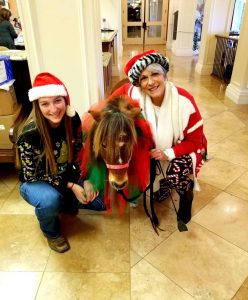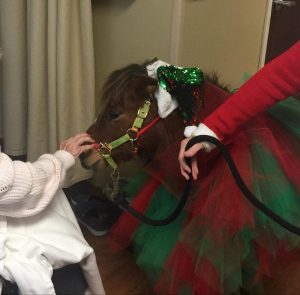Competency 6
Engage with Individuals, Families, Groups, Organizations and Communities
Practice Behaviors
- Apply knowledge of human behavior and the social environment, person-in- environment, and other multidisciplinary theoretical frameworks to engage with clients and constituencies.
- Use empathy, reflection, and interpersonal skills to effectively engage diverse clients and constituencies.
Engaging with individuals, families, groups, organizations and communities as a social worker means that I will incorporate my knowledge learned from class and research into my engagement with all clients and client families. I will strive to use active listening skills, empathy, reflection, and other interviewing skills when interacting with clients and client families. In becoming an ethical social worker, I will strive to treat each client and client family with respect and recognize the dignity and worth of a person as well as the importance of human relationships through all my interactions.
Evidence 1 (Class):
For my Social Work Practice with Groups and Families class, I was able to facilitate and co-facilitate a group which consisted of young adults. Through these group facilitations, I was able practice my engagement skills with the different individuals in the group but also with the group as a whole. To listen to the audio recording of one of the group facilitations, click the following link:
Evidence 2 (Field):
At my field placement, DFCS in Catoosa County, I get the opportunity to call collaterals for the different case workers regarding different cases. Collaterals are the equivalent of references for each client that can give an update on the child or answer questions regarding the client family and how they function. This gives me an opportunity to engage with doctors offices, schools, day care facilities, as well as with friends and family of the clients and client families. I am also able to practice documentation of these engagement opportunities to be uploaded into the online program. I was able to write about these engagement opportunities in a weekly journal. To read the full journal entry, click here.
Evidence 3 (Additional):
My neighbor provided me with an opportunity to go with her to different assisted living facilities and memory care facilities with her miniature horse named Miss Muffit. This gave me an opportunity to engage with different individuals and talk with them about Miss Muffit, and other horses like her while practicing a form of equine therapy. One individual brought a children’s horse book to show me and excitedly told me all about the book. I was able to practice my engagement skills with these individuals and bring joy to their life through the form of a miniature horse. Below are pictures of me and my neighbor with Miss Muffit at one of the assisted living facilities as well as a picture of the interaction between one of the individuals and Miss Muffit. All parties have given permission for these photos to be used.
Skills Used:
For this competency, I used active listening skills, empathy skills, interviewing skills, and communication skills.
Knowledge Used:
For this competency, I used knowledge learned about interviewing and engagement from classes such as Interviewing Skills, Social Work Practice with Individuals, Social Work Practice with Groups and Families, and Social Work Practice with Organizations and Communities. I used knowledge about how to call collaterals and questions to ask from my field instructor and other case workers at the agency. I used knowledge about horses and interactions between horses and humans from personal experience and personal research.
Values Present:
For this competency, the values of service were present as my neighbor and I brought a form of equine therapy to many residents living in assisted living facilities and memory care facilities. The values of social justice and dignity and worth of a person were present as I called collaterals ensuring that each client and client family that we work with gets checked up on and is getting the services and help they need. The value of competence was present when facilitating the group session as I had to be prepared for what I was going to do while facilitating.
Cognitive Processes Used:
For this competency, I had to recall and repeat my interviewing and engagement skills along with what I had prepared for the group facilitation. I also was able to practice calling collaterals and reporting what happened during the phone call to enhance my engagement and documentation skills. Lastly, I was able to discover how engagement between clients and horses helps to brighten any mood and engage the clients in more conversation.
Affective Processes Used:
For this competency, I was able to experience interactions with older adults and horses and contribute to the experience the clients were having. I had to integrate a curriculum program into a group facilitation session and resolve any conflict that came up. Lastly, I was able to seek information regarding clients and client families at my practicum placement and was able to clarify any questions that I had.
Theoretical Foundation:
The Identifiable Victim Effect. This theory states that we, as humans, are more likely to empathize with specific individuals that we interact with that we feel are suffering more rather than a large group of people. In social work, it is important to understand this theory and the concept that goes behind it. It is important to realize that this may be our natural tendency, however, we must remember that each person is deserving of empathy and services. When working with groups, it is important to be intentional about providing empathy to the whole group rather than just the people that stand out to us as suffering more.

